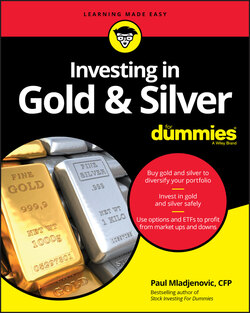Читать книгу Investing in Gold & Silver For Dummies - Paul Mladjenovic, Paul Mladjenovic, Ted Sudol - Страница 58
Comparing Gold to Other Investment Assets
ОглавлениеGold is a finite element (literally — it’s the symbol AU on the table of elements) and has all the necessary qualities needed as money. It’s durable, portable, and divisible. It’s malleable enough to turn into coinage. It doesn’t decay or tarnish and is indestructible. In ancient times, it became an ideal medium of exchange and a store of value ever since. In short, it’s nearly an ideal form of money especially when compared to other forms of money (such as paper and digital currencies). When you juxtapose gold against modern world currencies, such as the U.S. dollar, the euro, the British pound, and the Japanese yen, you come away with some compelling points.
Figure 5-1 provides a snapshot of gold’s price performance since the beginning of this century (as of the first trading day in January 2000).
© John Wiley & Sons, Inc.
FIGURE 5-1: Gold’s price performance since the beginning of this century.
Gold began in early 2000 at a price of $288, and when you measure its performance with the price in mid-2020 (June 30, 2020) — $1,817.50 — you get a 531 percent total gain (sweet!). But how well did gold do against other conventional investment assets? Take a look in the following sections.
